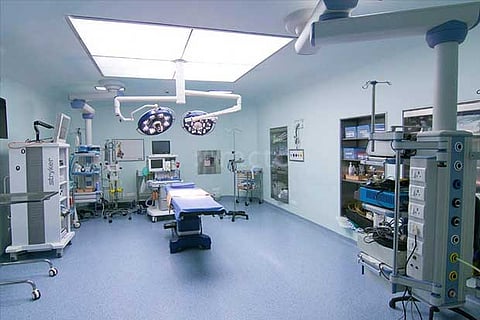

Chennai
Bishnu Virachan was a bicycle deliveryman for a grocery store in Queens. With New York City locked down, he was busier than ever. But in early April, as he was watching television, he felt “a pain in my heart.” It frightened him, but he did not go to the emergency room. Virachan, 43, was even more afraid of that. “What can I do? What can I do?” he asked. “Everywhere, the coronavirus.” After a few days, pain overrode fear and he went to Mount Sinai Hospital in Manhattan. Doctors discovered a nearly complete blockage of his left main coronary artery. A surgeon opened the artery, but Virachan was left with a weakened heart. Had he waited much longer, doctors said, he would have died.
Fear of the coronavirus is leading people with life-threatening emergencies, like a heart attack or stroke, to stay home when ordinarily they would have rushed to the emergency room, preliminary research suggests. Without prompt treatment, some patients, like Virachan, have suffered permanent damage or have died.
Emergency rooms have about half the normal number of patients, and heart and stroke units are nearly empty, according to doctors at many urban medical centers. Some medical experts fear more people are dying from untreated emergencies than from the coronavirus.
A recent paper by cardiologists at nine large medical centers estimated a 38% reduction since March 1 in the number of patients with serious heart attacks coming in to have urgently needed procedures to open their arteries. On a recent day at the Cleveland Clinic, there were only seven patients in the 24-bed coronary care unit. Usually the unit is full.
“Where are the patients?” asked Dr Steven Nissen, a cardiologist there. “That can’t be normal.” The inpatient stroke unit at Stanford University Medical Center in California usually has 12 to 15 patients, said its director, Dr Gregory Albers.
On one recent day in April, there were none at all, something that had never happened. It’s frightening,” Albers said. Yet few COVID-19 patients have been admitted to the hospital, and people needing emergency treatment have little to fear. “We prepared for an onslaught, but it has not arrived,” Albers said.
According to Dr. Samin Sharma, who heads the cardiac catheterization lab at Mount Sinai Hospital in New York, the number of heart attack patients fell from seven in February to three in March. So far in April there have been only two.
It’s not just the US. Dr Valentin Fuster, editor of the Journal of American College of Cardiology, said he is getting so many papers from around the world on the steep decline in heart attack patients in hospitals that he simply cannot publish them all. A hospital in Jaipur, India, for example, that Sharma owns, treated 45 heart attack patients in January, he said. In February, there were 32, and in March, 12. In April, so far the number is just six.
Could it be that there actually are fewer medical emergencies now? Fuster speculated that perhaps people are healthier because they are eating better, exercising more and under less stress now that so many are working from home. And, of course, the air is cleaner in urban areas. Other experts doubt that better health habits could have such dramatic and immediate effects. Far from eating better, Nissen said, many patients tell him they are overeating comfort food. There is no evidence that people are exercising more, and people are hardly under less stress.
— The writer is a science reporter with NYT© 2020
Visit news.dtnext.in to explore our interactive epaper!
Download the DT Next app for more exciting features!
Click here for iOS
Click here for Android